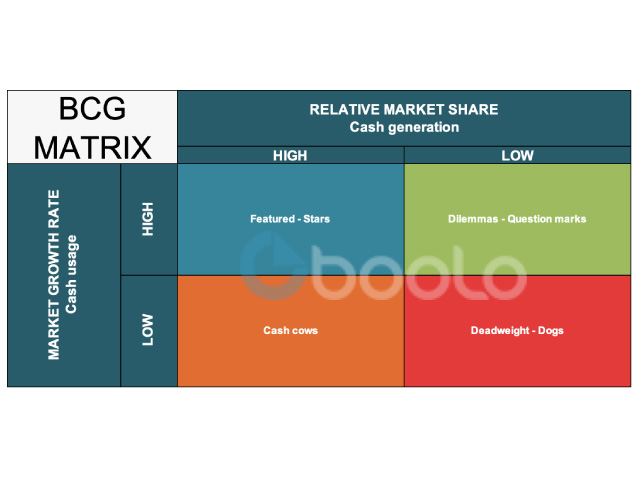The first part of our analysis will focus on analysing the economic importance of the sector through key figures and context. We will then study the offers and players in the sector. Then we will end with the analysis of demand.
First, we will analyse the company The Body Shop by using the explanation of the BCG matrix
We will start this part with the presentation of The Body Shop brand. The boutique was born in 1976, thanks to the talented Anita Roddick. The company's first store was established in Brighton. Anita Roddick's first idea was to base her business idea on the service of well-being. The desire to stick to a beauty store standard has never been the aim of the brand, which really wanted to put itself at the service of others, all with maximum respect for nature and the environment.
In order to analyse The Body Shop brand through the BCG matrix, we will first explain what this matrix is. Indeed, the latter works exponentially, along two axes that evolve at the same time. These are called "market growth rate" and "relative market share". This matrix was created in the second half of the 20th century by the Boston Consulting Group. Thus, and in other words, the BCG matrix (from the name of the company that created it) represents the portfolio of the sign according to the growth of the market which is targeted and according to the relative market share of the company.
In the third quarter of 2019, The Body Shop brand recorded a turnover of 760 million euros, up 7.1% compared to the previous year's report for Brazil. All the countries thus recorded an increase, going for the weakest to register at + 1.1%. The president of The Body Shop has also welcomed such an increase in sales, surreptitiously admitting that this dazzling increase was not as widely expected. France ranks fourth in terms of The Body Shop sales, after the United Kingdom, Germany, and Sweden. In 2015, the brand had 67 stores in France. The French director of the brand hoped to quickly increase this to 100 stores in the country.
We have just studied through this first part the contextualisation of the BCG matrix linked to The Body Shop brand. As we have seen together, the brand has managed to find a place of choice in the cosmetics market worldwide, but also in France.
We will now begin our second part, analysing the offers and the players.
Nowadays, the importance of fair trade is a factor. During an interview granted to the lsa-conso site, the France director of The Body Shop, Olivier de Malézieux, effectively announced that he was following the logic of fair trade for all. Three pillars thus seem to emerge for the brand: "Our distribution, our products, and our values”.
Indeed, Anita Roddick seems to have been a pioneer in the industry. Remember that the brand was created about forty years ago. At that time, animal testing of cosmetics and various practices were commonplace. Nowadays, the well-being of the planet has become a priority, including the care of animals and maximum respect for the environment. Companies in the cosmetics sector are trying to slowly eliminate animal testing and adopt an ethos of respect for the environment. However, The Body Shop still seems to be one of the most outspoken in terms of conservation.
Currently, consumers pay more and more attention to the origin of the products purchased and under what conditions the consumables were created. Thus, and as the Boston Consulting Group matrix also reminds us, it is important to find the right balance between the relative market share, which is indeed important, and the growth rate of the market. The latter, in full expansion, could allow The Body Shop to place itself in the spotlight on the global cosmetics market.
We have just analysed The Body Shop business in connection with the BCG matrix, based on the players and supply of the cosmetics industry.
We will now begin our third and final part, addressing the theme of the cosmetics market and consumers.
In 2021, the beauty market was estimated at nearly $511 billion. According to the forecasts of some experts, this figure could reach more than 700 billion dollars by 2025. The three main players in the sector are L'Oréal, Estée Lauder and Unilever. In this regard, we can mention the fact that The Body Shop was acquired in 2006 by L'Oréal, and thus contributes to this list. According to L'Oréal, in 2021, the company would have recorded a total turnover of more than 232 billion dollars or approximately half of the total value of the beauty market that same year.
Consumers seem to be more and more interested in the derma-cosmetic sector, with the idea of taking ever better care of themselves. Thus, Asia is the leading consumer in the beauty sector in the case of L'Oréal, followed closely by North America, then Europe, with respectively 35.1%, 25.7%, and 22.1% global market share.
To conclude, we can say that the BCG matrix indeed makes it possible to create a certain balance between the sales and the market shares of an economic sector. The Body Shop company, acquired in 2006 by the cosmetics giant L'Oréal, stands in an honourable place in the field worldwide. The L'Oréal group is also the world's leading company in terms of market share and turnover in the cosmetics sector.










